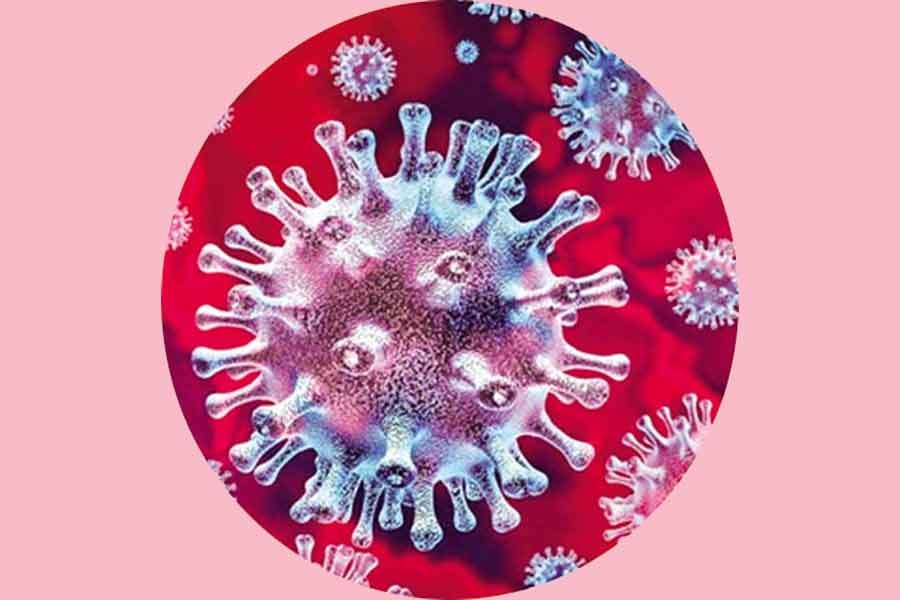It will be improper to say the virus is back. The truth is that it has been there, but only in a subdued state.
As the rates of both infection and fatality fell notably in the first two months of the current year, some people got an impression that the deadly pathogen is on the retreat. Some others started believing that the vast majority of the country's population had developed so much herd immunity that the virus was unable to break their defence system.
The unfortunate tale of the whole episode is that even some policymakers in the health sector started toeing the same line of thinking. Their role in handling the pandemic leads one to believe so.
The SARS-CoV-2 virus, it seems, has come out of its dormant state; it now appears to be hyperactive and more deadly. The pathogen, initially, took a little over four months to infect more than 4,000 people a day. But it has been able to double the infection rate in just one and a half months, lately. Records, in terms of death and infection per day, are tumbling now.
When the virus first struck the country in March last year, it was a new experience for everyone. So, it was nothing surprising that the people in the country's health sector, including physicians, would be in difficulty to cope with the situation, at least, during the initial days of the pandemic. Never before, had they faced a health emergency of such overwhelming proportion.
Naturally, there were mismanagement and foot-dragging. Yet people involved with the state health management agencies faced strong criticism for their lack of initiatives and dillydallying. There is no denying that at the onset of the pandemic, some of the major weaknesses of the country's health sector had come to the fore. Health experts and media highlighted those with the hope that the government would take steps to mend those.
The world has been amid the pandemic for more than a year. The time is not so short that our health-sector policymakers would not be able to correct, at least, some of their past mistakes.
The government did announce some major steps to improve a rickety health infrastructure last year. The steps included the raising of the number of beds in the intensive care units (ICUs) of public hospitals in Dhaka and at district headquarters. The installation of central oxygen distribution plants in district hospitals was also a priority programme.
But the execution of government plans and programmes, in most cases, faces problems of various sorts in this part of the world. Those are hardly completed on their pre-set deadlines.
People concerned were hopeful about the timely execution of the health sector projects that were taken up to meet the health emergencies. But their hopes have been largely dashed. This is evident from the sufferings that the Covid-19 patients are now undergoing, even in Dhaka where there is a high concentration of private and public health facilities.
Covid patients are finding no place in hospitals. Some critical patients are dying without treatment at hospitals premises and in ambulances. The ICUs of both private and public hospitals in Dhaka are full to their capacity.
The dispensation of high-flow oxygen remains to be the key to treating Covid-patients, who, in most cases, experience breathing difficulties because of lung congestion. The availability of high-flow oxygen is very limited now. Overall, there exists a crisis as far as management of Covid-patients is concerned. The situation is worse in districts where government hospitals lack most facilities.
Everyone is asking one particular question: what has the government done in the recent months to face an emergency health situation like the present one?
The truth is, in some cases, it has done the opposite. Take the case of two field hospitals the health authorities had built last year at a combined cost of Tk 440 million. The largest one was constructed at the site of the International Convention Centre at Bashundhara and the other at the DNCC market building at Mohakhali. Both the hospitals remained largely unutilised. Late last year, the Bashundhara facility was dismantled without explaining any reason. The temporary hospital at the DNCC market has only drawn dust since its inception. Now, work is on to set up yet another temporary hospital on another floor of the same market.
The government reportedly has received a substantial volume of assistance from multilateral donors to beef up capacity in the health sector to face any emergency. It was not at all a difficult job on the part of the health authorities to raise the number of ICU beds, at least, to a respectable number and install central oxygen plants in hospitals in the past few months. The authorities owe an explanation to the people for its failure to execute the relevant projects and plans on time.


